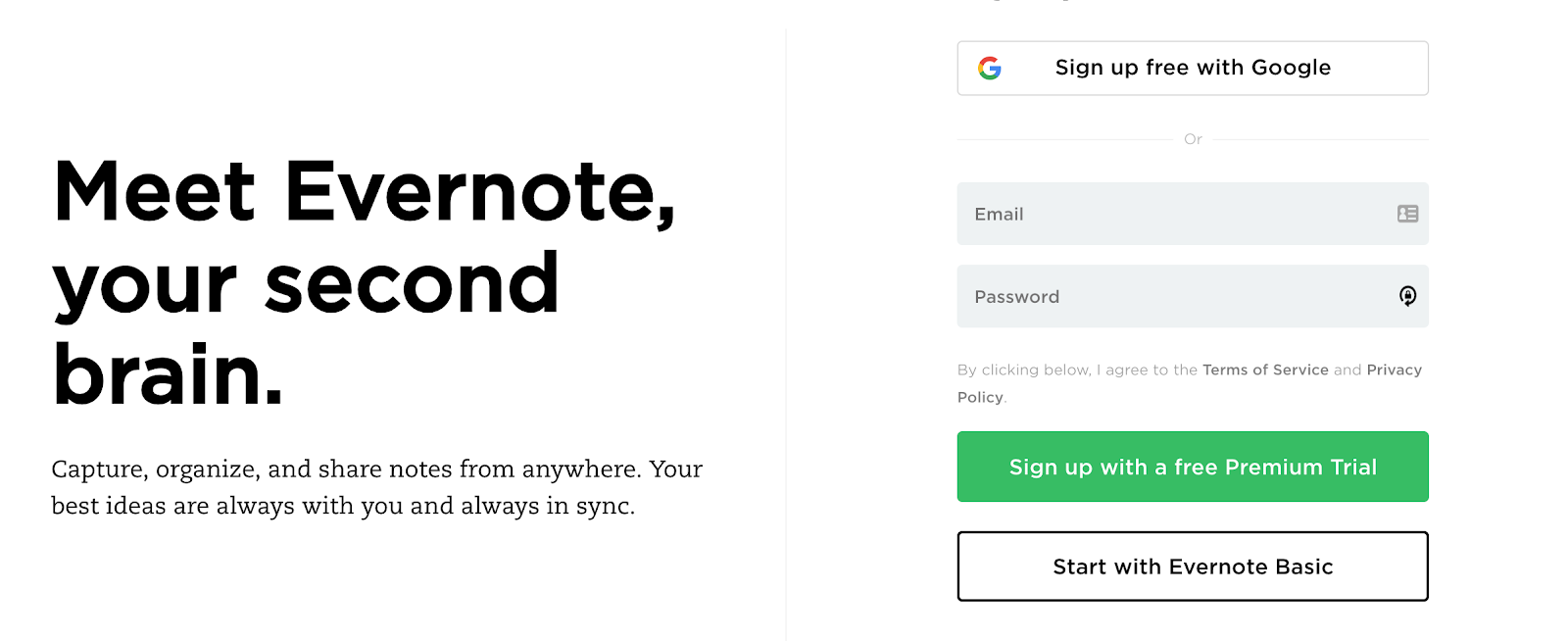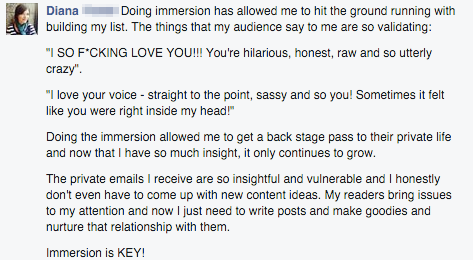Great news: You’re going to learn what good copy is.
Greater news: You’re going to learn HOW to write good copy.
Greatest news: You’re going to make a lot of money from your good copy — if you do it right that is.
As a member of IWT, I’m a part of a team of world-class copywriters responsible for creating top-performing copy. That means crafting six- and seven-figure email funnels and writing sales pages that could sell hair gel to Patrick Stewart.
We learned from the best, too. When our company’s founder, Ramit Sethi, released his first course in 2009, he decided to up his copy game. After devouring every copywriting book he could get his hands on and studying the masters, he put his study into practice.
And his traffic exploded.

He also increased his revenue by 20x.
Not bad for a guy who chose IWillTeachYouToBeRich.com as his domain name.
The principles he learned are closely guarded secrets. Even the very thought of sharing them with the masses could result in banishment or death. At the risk of enduring both of those, I’m going to share the secrets with you today. I’m like Prometheus giving the world the flames of awesome copy. Dope.
The biggest mistake when writing copy
Good copy is mind reading — ETHICAL mind reading, but mind reading nonetheless.
You want people to do something after they read your copy. Buy your course. Hire you as a coach. Swipe you right on Tinder. Whatever.
The key to effective mind reading is getting into your readers’ heads. Obvious, right? Then why do people get it so. Damn. Wrong.
Examples:

I read these two examples to help me sleep at night instead of taking melatonin.
They’re emotionless. They tell us virtually nothing. And worst of all, they’re BORING. Also: Who says they want someone with “a high level of understanding” and “more complete solutions”?
Now compare this to copy that works:



I want to take these examples on a romantic getaway to Tuscany where I’ll serenade them with flamenco guitar music in the moonlight. It’s that SEXY.
The biggest reason the second set of examples work: They made it about the reader — not themselves.
The truth is your customer doesn’t give a damn about what YOU think. They care about what you can do for them.
Let’s break down an example:
Show of hands, does anyone care about “a performance expert skilled in catalyzing change” or someone who makes “creative, impactful experiences that promote lasting change”?
Anyone? Anyone? OF COURSE YOU DON’T!!!
That’s because whoever wrote this copy made it about them and not the reader. No one cares about who you are — they only care about what you can do for them.
The important thing is learning what your reader wants.
How to write copy that gets in their heads
Good copy is written before you put any words on the page — and it starts with knowing what the readers want to hear.
That means becoming a mind reader.
Yes, it’s possible.
No, you don’t need to dig that ancient and unholy grimoire (the one bound in human flesh and inked in blood) out of the attic.
Instead follow these steps:
Step 1: Immerse yourself
Spend a few days, weeks, or even months (or even your yeeeeaaaarrrrs) talking with your customers about what they want. We call this the Immersion Strategy, and it’s the most important step for any entrepreneur.
That’s because the things you learn in Immersion affect EVERY facet of your business — not just copywriting. During Immersion, you’re going to learn your customers’ desires, their fears, and the exact words you can use that’ll have them clamoring to buy from you.
And how you reach out to your readers is going to vary. An online fitness coach focused on twenty-something men is going to find clients in a different place than a programmer who offers a course on Python.
My advice: Go to where your readers live.
These are places online or even IRL where your potential readers and customers frequent.
Entrepreneur Luisa Zhou did this to great effect — and it helped her earn $1.1 million in less than a year.
From Luisa:
“I started spending all my free time hanging out where my potential clients were online (free Facebook groups) and directly engaging with them by sharing valuable content and answering any questions I could about advertising.”
Do the same for your readers. Ask yourself:
- Are there any Facebook groups or subreddits they like to visit? The relative anonymity of the internet lends itself amazingly to unfiltered thoughts and opinions.
- What books are they reading? The Amazon review sections are a goldmine of quotations and insights.
- Do you know of anyone who might be your reader? Let them tell you themselves what their desires and pain points are.
Once you’ve found your audience, it’s time to actually talk to them.
I know. It’s scary to actually reach out and talk to people — but your copy is going to benefit from it.
…but you don’t have to take the same path as everyone else. How would it look if you designed a Rich Life on your own terms? Take our quiz and find out:
Step 2: Pick your readers’ brains
Knowing where to find your readers is only half the battle. The other half is knowing what to look for. For that, there are three things you should consider that’ll get you the best insights:
- Hopes and dreams. Your customers’ goals. What is it they want the most? How can you help them achieve it?
- Pains and fears. This is what your customers want to avoid no matter what. What are they afraid of? What scares them?
- Barriers and uncertainties. The things in the way of your customers’ goals. What are they tired of? What’s stopping them from their desires?
These three elements are going to be the foundation for your Customer Desire Map.
Collect as many insights as you can. Plan to spend AT LEAST a few days on this stage (some people spend many months in Immersion).
If you need more help with the Immersion Strategy, be sure to check out our resources below to help you out.
- How a $100,000 sales page is made
- Why it took me six months to find my business idea
- Exactly how Ramit does market research
Don’t short-cut this. This is where the IWT team spends 60% to 80% of our time when it comes to developing products and copy.
Step 3: Write what you learn
We’ve used exact quotes from our audience in our sales copy. For example, we once had a reader tell us, “Everyone keeps telling me to follow my passion, but I don’t know what my passion is!”
Hmm. That’s a nice nugget. I wonder if there’s any way we can use it in our copy…
BLAM. We pulled that exact quotation from our reader and used it for our Dream Job course.
Do this yourself and ask: How can I work the best insights into my copy?
And when you’re actually writing the copy, a few suggestions:
- Read everything out loud. Reading our copy out loud helps us find what’s clunky. If you find yourself stumbling over your words, delete or rework that sentence.
- BAD: “Your fitness routine shouldn’t be drudgery. I’ll help you develop a better understanding of health and nutrition.”
- GOOD: “I’ll help you get ripped — even if you hate going to the gym.”
- Show us what’s happening. Paint us a picture and show us something rather than just telling.
- BAD: “I don’t like commuting.”
- GOOD: “Every day, I wake up and think, ‘God, I can’t take another 45 minutes of sitting in bumper-to-bumper traffic to get to a job I hate.’”
- Utilize the “Bar Stool” technique. Good copy is conversational. So if you wouldn’t say it to your buddy in a bar, don’t write it.
- BAD: “The most crucial step to building a solid financial foundation is to make sure you have a diversified portfolio of mutual funds.”
- GOOD: “Investing early will help you get rich.”
Signs of success
So you’ve written the copy … is it working?
There are a few clues that’ll let you know that you’ve written stellar copy.
1. Your readers LOVE your writing
Just like how they helped you write the copy, your readers will also let you know whether or not your copy is effective.
For example, here’s some feedback we’ve gotten for the IWT team and Ramit:
- “I feel like Ramit is personally talking to me in his emails … like he can read my mind. A little creepy, but effective, obviously.” – Megan
- “I was hooked. Hooked on the psychology behind everything, Ramit was in my head and knew exactly what I was thinking…” – Anthony
- “I’ve been on your email list since early 2011. I never paid you a dime … however, this is exactly what I have been looking for and what I need. You are totally in my head and your sales page struck multiple chords with me.” – Jesse
You’ll also learn a lot about what you can improve. Sometimes criticism will be comprehensive and helpful:

Other times, not so much:

It’s a tenant in copywriting that not every piece of criticism will be helpful. But learning how to discern the good from the bad can help improve your copy immensely.
2. You’ll CRUSH “writer’s block”
When you know your audience, you’ll never run out of things to say. That’s the beauty of the Immersion Strategy.
Your audience and customers will always have burning pains and desires. As long as you consistently tap into that well, you’ll always have a HUGE amount of ideas for emails, blog posts, sales pages, landing pages, whatever!
Check out this example from one of our former students Diana Tower:
Your copy can be like mind reading — and Immersion is how you get there.
Learn to write remarkable content
Now you know how to get started writing copy that reads your customers’ minds — but this is just the first step.
That’s why I want to offer you something that’ll help make your writing amazing:
The Ultimate Guide to Remarkable Content
Our founder Ramit Sethi distilled down his insights from 12 years of writing viral blog posts. He noticed that each of his most popular posts have seven distinct parts to them.
In this Ultimate Guide, Ramit will show you how to replicate those parts in your own posts.
Simply enter your name and email below and get instant FREE access to the guide — and start writing content people LOVE today.
If you liked this post, you’d LOVE my Ultimate Guide to Remarkable Content
It’s one of the best things I’ve published, and totally free – just tell me where to send it:
